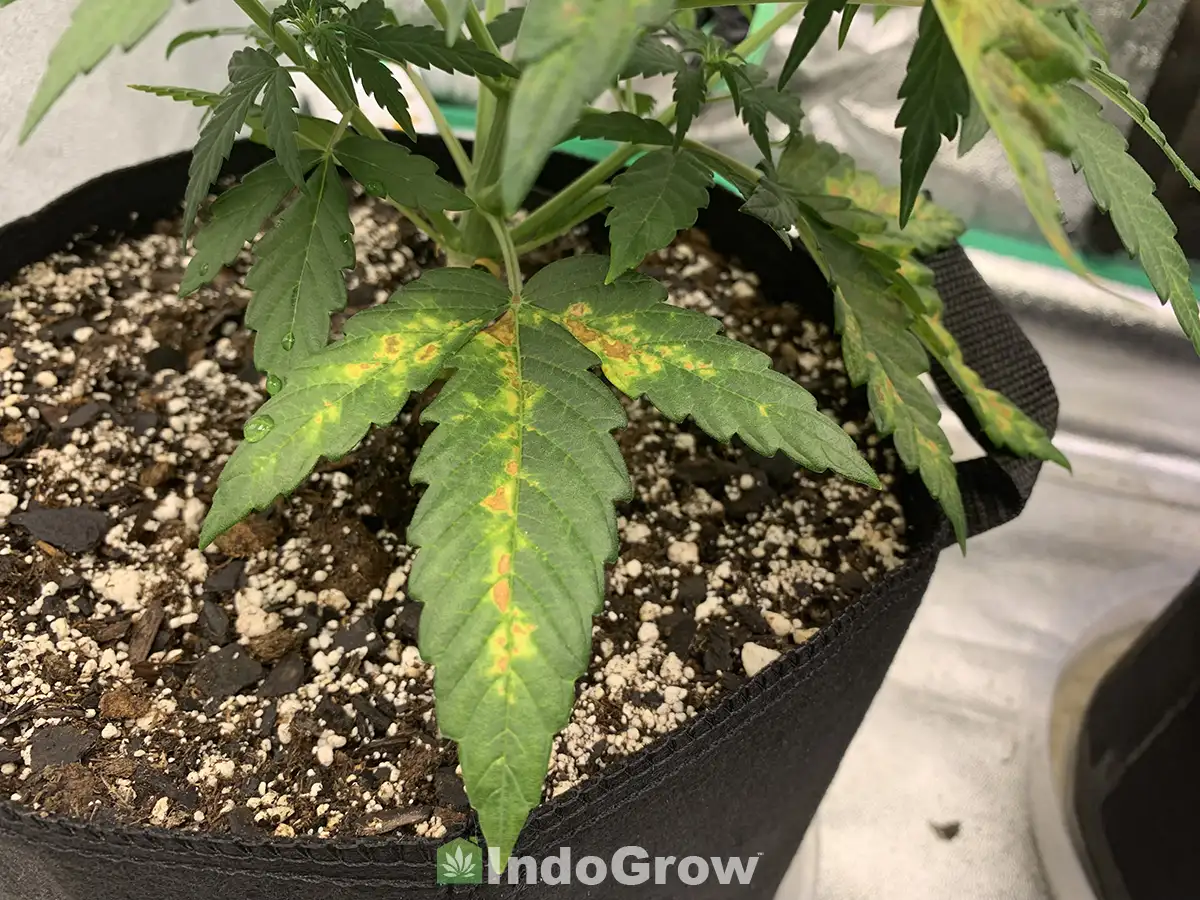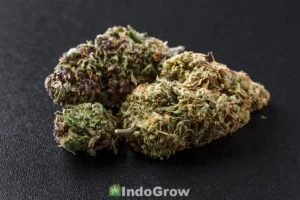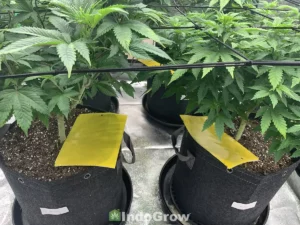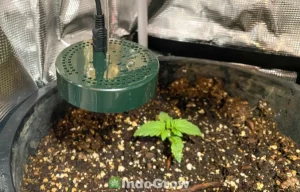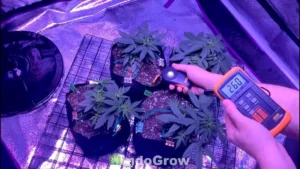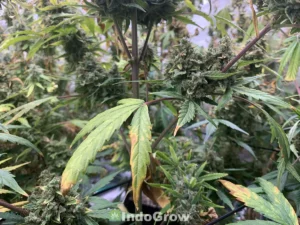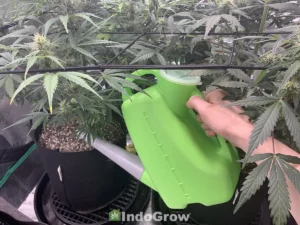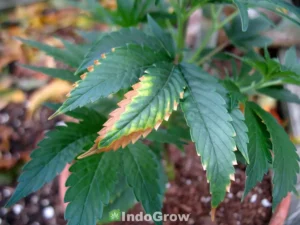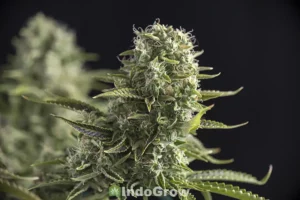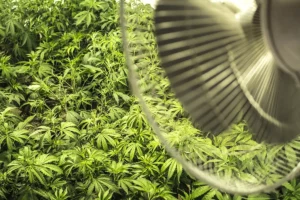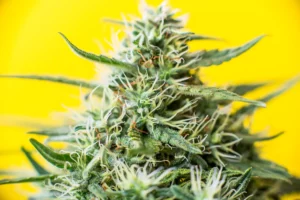Cannabis calcium deficiency and toxicity can cause a range of worrying symptoms in your plants. Calcium is an important macronutrient for cannabis and too much or too little can seriously hurt your harvest.
This article will explain how to recognize, treat, and prevent calcium deficiency and toxicity in cannabis plants. You will also learn how to balance pH and other nutrients to ensure that the calcium you feed is actually reaching your plant.
Table of Contents
- Why is Calcium Important for Cannabis Plants?
- Calcium Deficiency Symptoms in Marijuana
- How Much Calcium to Give Cannabis Plants?
- What is the Proper Calcium to Magnesium Ratio for Cannabis Plants?
- How to Fix Calcium Deficiency in Cannabis Plants
- Cannabis Calcium Toxicity Symptoms
- How to Fix Calcium Excess in Cannabis
- Calcium Supplementation for Reverse Osmosis (RO) Water
- Conclusion
Why is Calcium Important for Cannabis Plants?
Calcium is an essential secondary macronutrient for cannabis plants, and it aids in strengthening cell walls and membranes, transporting nutrients throughout the plant, photosynthesis, and more. Calcium deficiency in cannabis can lead to slow, flimsy new growth and lowered resistance to pests, fungal infections, and various environmental stressors. In comparison, plants with sufficient calcium will be sturdier, hardier, and faster growing.
Calcium Deficiency Symptoms in Marijuana
Symptoms of marijuana calcium deficiency include necrotic spots on the leaves, slowed or stunted growth, pale leaf margins, flimsy new growth, and more. These symptoms typically first appear on new growth near the top of the plant, as well as older leaves exposed to direct light. Symptoms start to appear several weeks after the deficiency begins and continue to increase in severity over time.
Because calcium is a mostly immobile nutrient, the cannabis plant cannot strip calcium from the lower leaves to supplement the new growth, causing calcium deficient cannabis to have relatively healthy lower leaves paired with increasingly damaged upper leaves.
Calcium Deficiency Symptoms in the Vegetative Stage
In vegetative plants, symptoms of calcium deficiency in cannabis will begin with slowed growth, pale green or yellow leaf margins, and small brown necrotic spots across the leaf. As symptoms progress, yellowed margins and necrotic spots will expand, and yellowing will appear along the leaf veins. New leaves may be unusually small, fragile, and pale.
Because of calcium’s importance in strengthening cell walls, calcium deficiency in weed can cause some additional symptoms that may at first appear to be environmental. Calcium deficient plants are more susceptible to damage from heat and light, especially on their fragile new growth. Additionally, high humidity can slow the movement of calcium from the roots to the top of the plant, causing deficiency symptoms to progress more quickly.
Calcium Deficiency Symptoms in the Flowering Stage
Similar to the vegetative stage, flowering plants will first display symptoms of calcium deficiency on their new growth. Fan leaves near the top of the plant as well as small sugar leaves near the flowers may display symptoms such as brown necrotic spots, yellowing, and fragility.
Although leaf discoloration can be normal in the late flowering stage, discoloration during early flowering when the flowers are still small with white pistil hairs is a cause for concern. Untreated calcium deficiency will lead to poor flower performance, with buds growing slowly or failing to mature at all.
How Much Calcium to Give Cannabis Plants?
Professional growers typically aim for an available calcium concentration of 150 to 300 ppm in their growth medium. Cannabis plants consume calcium at all stages of growth, so there is no need to vary the amount of calcium you are feeding between the vegetative and flowering stages.
At home, measuring calcium ppm is difficult since most nutrient solutions will contain a mixture of different nutrients. For most growers, supplementing a standard nutrient mix like Flora Series or Foxfarm Trio with a CalMag supplement will provide plenty of calcium. In fact, most calcium deficiencies are caused by factors such as low pH rather than a lack of calcium in the medium.
For growers using coco coir, you may need to perform a preventative step called buffering before planting cannabis in your medium. Untreated coco coir will take up calcium and magnesium from the soil and release potassium and sodium, potentially skewing the nutrient profile you are aiming for. To prevent this, you can either purchase buffered coco coir or buffer it yourself by rinsing it in a calcium rich solution before use.
What is the Proper Calcium to Magnesium Ratio for Cannabis Plants?
Most commercially available Calcium Magnesium (CalMag) supplements will have a calcium to magnesium ratio between 2:1 to 5:1. While home growers can create their own calcium supplements, keeping the cal:mag ratio consistent is extremely important. If you feed your plant only calcium supplements, it will eventually become magnesium deficient and vice versa due to nutrient lockout.
Calmag is best applied in a separate watering from your primary nutrient blend. This is because calcium can interact with phosphates in the watering solution, lowering the amount of phosphorus your plant is receiving. While preventative CalMag supplements can be very beneficial, especially for plants grown in coco coir or other soilless mediums, not every plant will need this supplementation. Read on to learn more about other potential causes of calcium deficiency and how to resolve them.
How to Fix Calcium Deficiency in Cannabis Plants
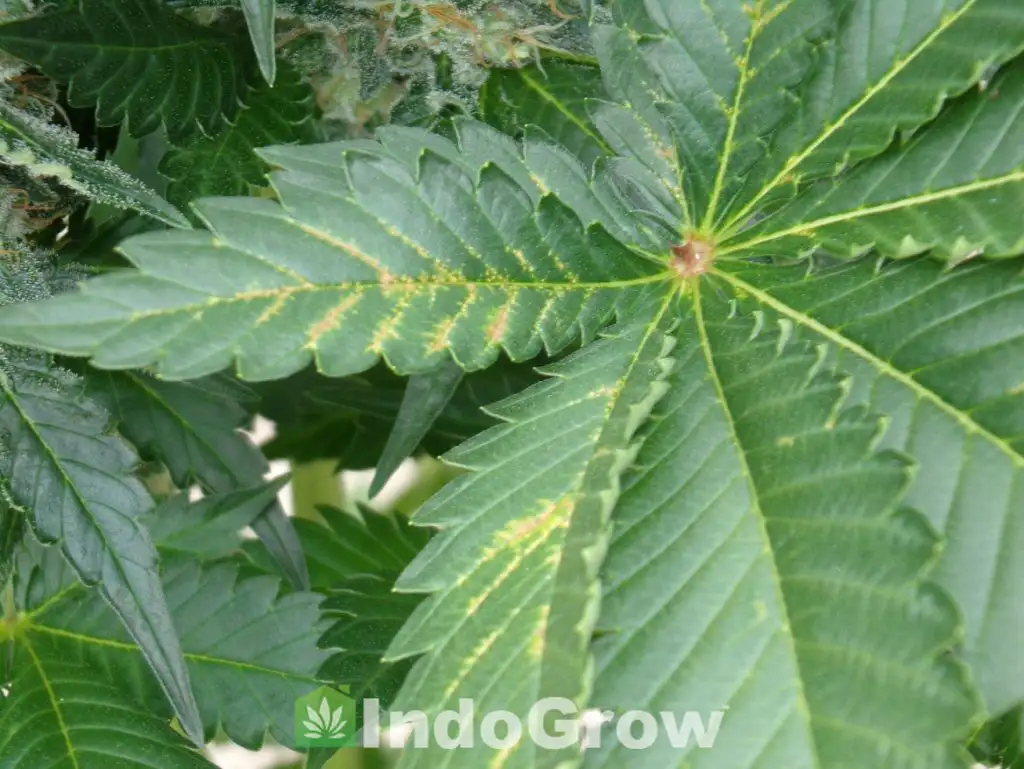
The number one cause of marijuana calcium deficiency is improper soil pH causing nutrient lockout. Soil pH below 5.5 will severely limit the amount of calcium your cannabis plant is able to take up. For ideal nutrient absorption, your pH should be between 5.8 and 6.2.
To test soil pH, use a pH test strip or stick in the runoff tray after watering. If your pH is outside of the ideal range, you can flush the growth medium with pH adjusted water to bring it back into normal range. For organic grows, pH adjusters such as lime or wood ash can raise pH, while sulfur or compost can lower pH.
If your pH is within healthy range and your plants are still showing symptoms of calcium deficiency, adding a CalMag supplement will likely be beneficial. Two of the most popular CalMag supplements are Calimagic and Botanicare Cal-Mag Plus.
Alternately, adding lime to your soil can both raise pH and increase calcium levels. This strategy can be particularly useful for organic growers or those who want to increase pH and calcium at the same time. Potential lime varieties to add to your grow include garden lime, dolomite lime, and hydrated lime, each of which has a unique chemical composition and differing effects on your grow.
CaliMagic
Calimagic is a Calcium/Magnesium fertilizer supplement produced by general hydroponics with a 1-0-0 NPK ratio. The solution contains 5% Calcium, 1.5% Magnesium, and 0.1% Iron. Calimagic can be purchased in sizes ranging from 1 quart to hundreds of gallons.
Botanicare Cal-Mag Plus
Cal-Mag Plus is a calcium/magnesium fertilizer supplement produced by Botanicare with a 2-0-0 NPK ratio. This solution contains 3.2% Calcium, 1.2% magnesium, and 0.1% iron. Cal-Mag Plus is available in sizes ranging from 8 ounces to 250 gallons.
Garden Lime
Garden lime, also known as calcitic lime, is composed of calcium carbonate. This lime variety is high in calcium and can begin raising soil pH in as little as one week. The lime will continue slowly raising soil pH for 1-2 months after application. For slower release times, garden lime can be applied in larger grit sizes instead of as a powder.
Although calcitic lime has large amounts of calcium, it contains little to no magnesium. Without magnesium supplementation, Calcitic lime may skew the soil’s Cal:Mag ratio and cause magnesium deficiency.
Dolomite Lime
Dolomitic lime is composed of both calcium carbonate and magnesium carbonate. Dolomitic lime powder is more slow acting than garden lime, taking about a month to show results. It also persists longer in the soil, with each application lasting 2-4 months. Similar to calcitic lime, dolomitic lime can be applied in larger grit particles for slower release, although this tends to be impractical for growing annual crops like cannabis.
One major benefit of dolomitic lime is its favorable calcium to magnesium ratio. Unlike calcitic lime, you will not need to add any additional magnesium when using this product. However, the slow release nature of dolomitic lime makes it better for preventative feeding than solving an acute calcium or magnesium deficiency.
Hydrated Lime
Hydrated lime, also known as builders lime or pickling lime, is composed of calcium hydroxide. Hydrated lime dissolved in water has a pH of about 12.5 and is capable of raising soil pH much faster than other lime varieties. It is usually used in a single application to rapidly adjust soil pH and add calcium.
Unlike Dolomitic or calcitic limes, hydrated lime will not persist in the soil for more than a week or so. While other limes are typically added preventatively, this lime is more favored for treating acute problems with pH or calcium deficiency. Similar to calcitic lime, you will likely need to add supplemental magnesium to your soil to balance out the increase in calcium from this product.
Although hydrated lime can be a good choice for rapidly raising pH, repeated application of this product can cause negative side effects, such as killing off beneficial bacteria in the growing medium. Adding other slow release limes preventatively is gentler on the soil ecosystem.
Cannabis Calcium Toxicity Symptoms
Calcium toxicity is rarer than calcium deficiency in cannabis, but excess calcium can cause symptoms such as yellow or brown leaf tips, necrotic spots on leaves, wilting, and slowed growth. When the plant takes in too much calcium, it will attempt to push the excess calcium to the leaf tips, causing the characteristic yellowing or necrosis around the margin of the leaves.
Many other symptoms are not caused by the calcium itself, but by the excess of calcium in the growth medium locking out other nutrients such as magnesium, iron, and potassium. Excess calcium can also raise pH out of the ideal range of 5.8-6.2, causing even more nutrients to become biologically unavailable.
How to Fix Calcium Excess in Cannabis
The first step to correcting a calcium excess is flushing the soil with pH adjusted water to remove built up calcium salts. Soil is usually flushed with three times as much water by volume as soil or coco coir in the pot. The plant should then be fed a nutrient blend with lowered calcium levels to replace nutrients removed during the flush.
The damage done to old leaves due to calcium excess is not reversible, so look at the health of new growth to determine if the intervention has been successful. In the future, be sure to stay within manufacturer recommended dosing and nutrient ratios to avoid excess calcium buildup.
If you are using hard water to water your cannabis plants, you may need to use a smaller dose of CalMag supplement to account for the minerals already present in your water.
Calcium Supplementation for Reverse Osmosis (RO) Water
Many growers with poor home water quality use a reverse osmosis (RO) filter to remove impurities from their water. While RO filters can remove potentially toxic compounds such as lead, iron, and copper from your drinking water, they will also filter out beneficial minerals like calcium and magnesium. For this reason, unless your water contains unsafe levels of heavy metals, using reverse osmosis water may be less healthy for your plants than tap water.
If you must water your plants with RO water, you may have to feed a higher than average amount of calcium and magnesium to account for the minerals your plant is no longer receiving naturally from their water. Be sure to test the pH of your water before use as well, since the Reverse Osmosis process will lower the pH of your water to around 5.0-5.5, which is too acidic for ideal cannabis growth.
Conclusion
Marijuana calcium deficiency or toxicity can weaken your cannabis plants and decrease the size and quality of your harvest. Interventions such as adjusting pH, adding a CalMag supplement, or adding natural calcium sources like lime can prevent calcium deficiency and help deficient plants recover.
Calcium excess can be treated by flushing the soil, followed by either reducing the amount of calcium being fed or fixing the calcium to magnesium ratio. Calcium is a slow moving nutrient that can take weeks to show deficiency symptoms and weeks more to recover, so taking preventative measures to keep pH and calcium within a healthy range is the best way to keep your plants healthy.

Rocky Horton
Author
Rocky Horton is an experienced cannabis grower and the founder of IndoGrow. The IndoGrow editorial team has over four decades of combined growing experience. Learn more.

